LG 29EA93 Monitor Review - Rev. 1.25
by Chris Heinonen on February 12, 2013 8:49 PM ESTLG also offers its own hardware and software calibration package for the 29EA93. Using a custom designed colorimeter, the hardware and software only work with LG monitors but are scheduled to sell for less than competing products from XRite and Datacolor. I mentioned earlier in the review that colorimeters are prone to errors on displays with LED backlights like the LG. This is a general rule, but since LG knows the spectral response of their displays they can program that into their own colorimeters, leading to much better results than a generic colorimeter. It usually won’t be as good as a meter profiled with a spectrometer due to sample variations, but it will be much better than without.
Using their own software and probe, I calibrated the display to the same settings I use: 200 cd/m² and a gamma of 2.2. An sRGB gamma curve is not supported, nor are colorspaces larger than sRGB with this version, but on their professional monitors with a more advanced meter, different colorspaces are supported. The process is very simple: You choose your targets, it will pop up a spot for the calibration puck on screen, and then you let it run the calibration. The process locks the monitor OSD controls as it adjusts it automatically, and then at the end it will create an ICC profile for you and install it.
To evaluate this profile, I again used CalMAN and used the same set of images that we use for our smartphone and tablet testing. Using the automated test pattern generator in CalMAN wasn’t possible, as it would attempt to load its own ICC profile and change the setting in the display. On first look, we see 197.3 cd/m² of light output and 0.19 cd/m² on a black screen for a contrast ratio of 1039:1. This wasn’t as good as I was able to achieve using CalMAN, which might indicate that it is obtaining the peak-white level differently. With CalMAN I could use the Contrast and Brightness controls to get just above 200 cd/m², allowing maximum headroom to adjust the curves to get accurate color. The LG software might not bring these down as much, and then bring down the RGB curves even more, which would lower headroom compared to the other method.
Our CCT average is 6415, but a look at the RGB balance shows that it starts out very good but then drifts a little towards the warmer, redish tint that the CCT reflects. Gamma is almost spot on at 2.21, save for a dip at 5% that most people won’t catch as they only measure in 10% increments. The dE2000 values follow the RGB balance as well, starting out very low but eventually drifting up to a level where a reddish tint will be slightly visible. The average dE2000 for the grayscale is 2.09, a number that is decent but not as good as CalMAN was able to achieve.
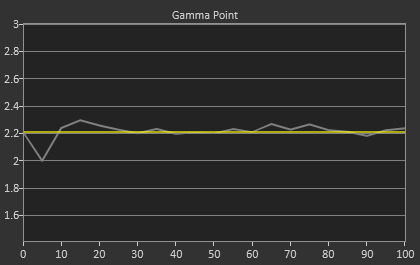
Looking at the Saturations and Color Checker charts, we see improvements but not to the degree that CalMAN allows. Our Color Checker dE2000 is 1.96, but with higher grayscale errors as well as larger errors in the over-saturated colors of red, yellow, and green. Blues also exhibit a bit of over-saturation as well, indicating that the LG sensor isn’t quite as sensitive as the C6 colorimeter, since blue is harder to read.
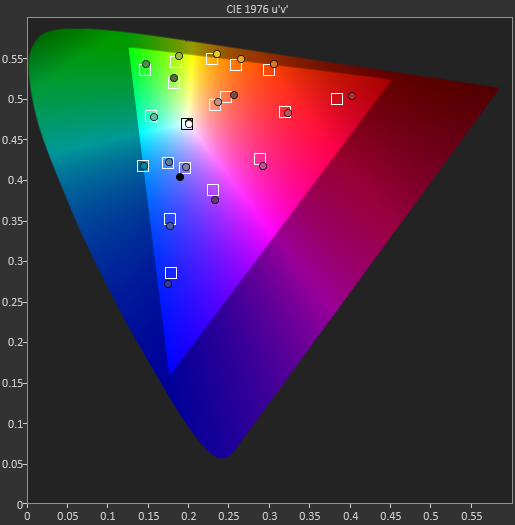
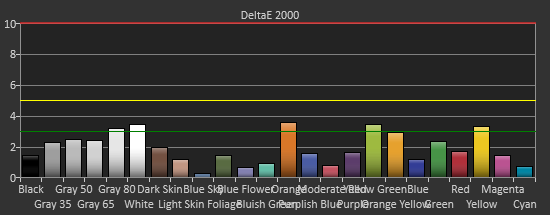
On the saturations data, we see that the Red/Yellow/Green side of the triangle has larger and larger errors as those colors get more saturated. With the over-saturated gamut, this is what we expect to see. Unfortunately none of the calibration software seems to be able to fully pull those points in and correct the over-saturated gamut there, leaving a bit of an error. The overall error is still fairly low, and with most colors not being fully saturated, that over-saturated error isn’t really bad, but better results were obtained with the CalMAN software.
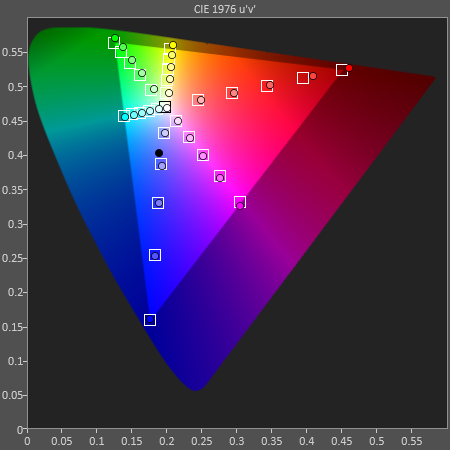
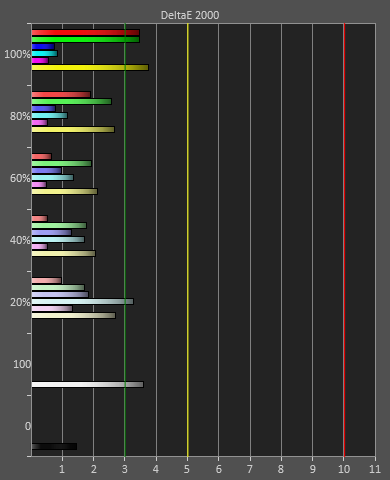
Overall the LG software and hardware solution does do a decent job, but it can’t compete with what is possible using CalMAN with better hardware. Of course, the CalMAN solution with a C6 and i1Pro meter retails for closer to $2,000 than $100, so they are very different spectrums of performance. For $100, I would say the LG results are quite good and will satisfy those that aren’t graphics or video professionals most likely. Just the superior gamma will make a large difference when viewing thanks to the superior dynamic range.








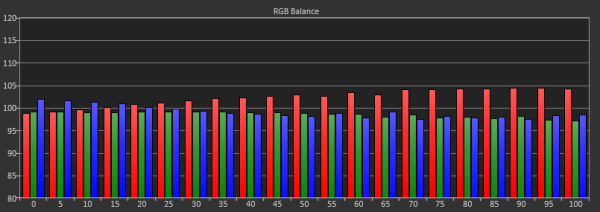
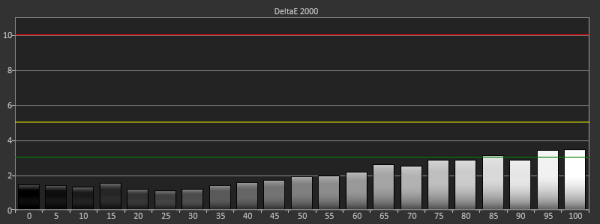








108 Comments
View All Comments
SithSolo1 - Tuesday, February 12, 2013 - link
Does the Dell UltraSharp U2913WM use this panel? I noticed Dell has pulled the product page and I'm wondering if maybe they are updating it with the new panel.cheinonen - Wednesday, February 13, 2013 - link
Both revisions of LG use the exact same panel, it's the QC and firmware that have been updated. I don't believe any electronics changed, but there is a possibility, but the panel is the exact same thing. It's a good reason why you can't look at two displays, see they use the same panel, and assume they'll be anything alike.Sabresiberian - Thursday, February 14, 2013 - link
This is a very good point, something I wish more people would realize; end-result quality isn't just based just on the panel technology (though of course that is a major influence).moep - Sunday, February 17, 2013 - link
So they essentially cherry-picked a panel, customized the firmware for it and flew in an engineer to hand it to you?Where does that leave the customers who buy their units in retail?
cheinonen - Monday, February 18, 2013 - link
They didn't re-engineer a panel for me, they went back and redid the firmware for everyone and then provided a new model once that was complete. Anyone can buy the same version that I received, and anyone with an older revision of firmware can contact LG to get an upgrade to version 1.25 from them.darwinosx - Wednesday, February 13, 2013 - link
They have?http://www.dell.com/ed/business/p/dell-u2913wm/pd
Grok42 - Tuesday, February 12, 2013 - link
I love to see someone, anyone pushing the state of the computer display industry. I'll pay a premium for anything that gives me more than 1080p which was a step back when it came out. If I recall this monitor doesn't rotate into portrait mode which is my only remaining wish. Of course, given it's dimensions, I might not want it to rotate, any thoughts on this?cheinonen - Wednesday, February 13, 2013 - link
The included stand doesn't rotate, but it does have VESA mounting screws to do that. If it was rotated, it would be very, very tall on a desk. It really depends on what you'd want to do with the space for how well that works, but our field of view is typically much wider than tall, so to me, that layout might not work quite as well.Miqunator - Wednesday, February 13, 2013 - link
I'm not that interested in Ultra Widescreen monitors (16:10 person) but the response from LG after the initial review certainly improved my opinion of them. A cheap TV I randomly picked up before turned out to be the best I've ever used so they already had a rather high standing and it seems that one wasn't just a fluke.Gambit2K - Wednesday, February 13, 2013 - link
First comment ever on anand woopwoop! ;)Im extremly interested in this monitor and I have the finger on the trigger but my question is will there be 2 version floating around? Will LG release the monitor with a visible "version 1.25" in the description or is it a total lottery if you get the new version or the old?